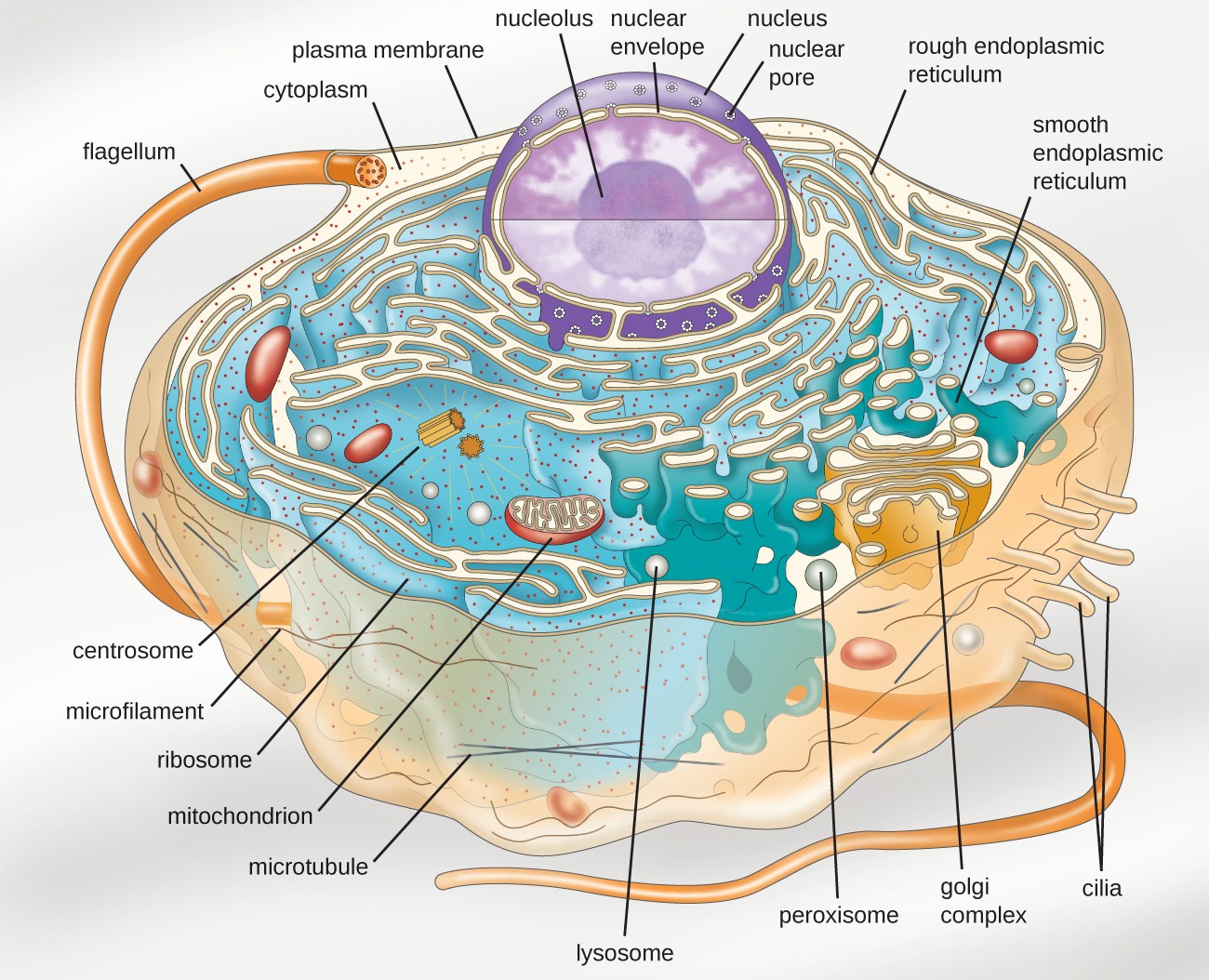All Eukaryotic Microbial Cells Have Which of the Following Structures
Plant animal fungi and protist cells. Which of the following structures are found in some but not all eukaryotic microbial cells.

Eukaryotic And Prokaryotic Cells Microbiology Class
So its actually not gonna be found in all types of cells.

. Bacteria are like eukaryotic cells in that they have cytoplasm ribosomes and a plasma membrane. Choose any one of these. A thick cell wall and the cell membrane.
Except some all structures do not occur in. Which of the following describes eukaryotic flagella. All cells have a plasma membrane ribosomes cytoplasm and DNA.
Eukaryote have different cell organelle that performs different function this include vacoulemitochondriacell wallnucleusflagellumchloroplast. Bacterial cells could have any of the following appendages except. Which of the following is the most external structure of eukaryotic microbial cells.
Both prokaryotic and eukaryotic cells have structures in common. Correct The cytoplasm plasma membrane nucleoid and ribosomes are found in all bacterial cells. P Flag question All eukaryotic cells have the following structures EXCEPT Select one.
Features that distinguish a bacterial cell from a eukaryotic cell include the circular DNA of the nucleoid the lack of membrane-bound organelles the cell wall of peptidoglycan and flagella. Which of the follow comparisons would be an inaccurate analogy between prokaryotic cells and eukaryotic cells. All living cells both prokaryotic and eukaryotic have the following cell structures.
So our first example we have cell walls in that scene right here in the green and this is going to be found in plants fungi and some bacteria. Eukaryotic microbial cells have cytoplasmic membrane nucleus mitochondria ER Golgi vacuoles cytoskeleton and glycocalyx. Numerous membrane-bound organelles including the endoplasmic reticulum Golgi apparatus chloroplasts and mitochondria Additionally what is not found in all bacterial cells.
Cell membrane Glycocalyx Mitochondria Golgi. All of the following structures contribute to the ability of pathogenic bacteria to cause disease EXCEPT the. Nucleus Endoplasmic reticulum mitochondria The organelle which is a closed tubular network that functions in nutrient processing and lipid synthesis is which of the following.
All eukaryotic microbial cells have which of the following structures. One or more chromosomes 2. Pilus pili nucleoid cytoplasm.
Eukaryotic cells have mitochondria whereas they lack in prokaryotic cells. Cell membrane c. Unlike in prokaryotic cells where the Golgi apparatus is present in.
Vacoule help in storage and transportation within body system Chloroplast is the photosynthetic pigment helps trap sunlight. Eukaryotic cells possess microtubules but are absent or few in bacterial ones. All bacterial cells have.
Eukaryotic cells possess ribosomes that are bigger but smaller in prokaryotic cells. They consists of various cell surface structures cell wall plasma membrane many cytoplasmic inclusions and the bacterial chromosome nucleoid. A eukaryotic cell is a compartmentalised cell that contains organelles such as a nucleus and mitochondria.
However unlike prokaryotic cells eukaryotic cells have. Correct option is A A eukaryote is the organism with complex features ie it is apart from the prokaryotic cell it has membrane-bound organelles especially the nucleus which contains the genetic material enclosed by the nuclear membrane. Thicker than prokaryotic flagella A long sheathed cylinder Composed of microtubules.
A eukaryotic cell has a plasma membrane cytoplasm and ribosomes including the endoplasmic reticulum. Eukaryotic cells possess endoplasmic reticulum in but prokaryotic cells lack. The cytoplasm plasma membrane nucleoid and ribosomes are found in all bacterial cells.
Flagella capsule ribosomes plasma membrane cell wall fimbriae. Surface components capsule cell wall fimbriae flagella are. There are four main types of eukaryotic cells.
In this article we will mainly cover animal and plant cells. Like a prokaryotic cell a eukaryotic cell has a plasma membrane cytoplasm and ribosomes. Unlike prokaryotes which do not have a nucleus all eukaryotes have a nucleus.
The plasma membrane or cell membrane is the phospholipid layer that surrounds the cell and protects it from the outside environment. One or more chromosomes b. Plasma membrane Question 2 Not yet answered Marked out of 100 P Flag question In a eukaryotic cell which component is involved in both protein and lipid synthesis.
A - A eukaryotic cell is like a college campus was a prokaryotic cell is like a one-room schoolhouse B - A eukaryotic. Capsules fimbriae pili flagella and even the cell wall are not found in all bacteria. Common Features of Eukaryotic Cells Membrane-delimited nuclei Membrane-bound organelles that perform specific functions Intracytoplasmic membrane complex serves as transport system More structurally complex and generally larger than bacterial or archaeal cells 5.
Plasma membrane cytosol ribosomes and at least one chromosome. Which structure is common to both prokaryotic and eukaryotic cells. Capsules fimbriae pili flagella and even the cell wall are not found in all bacteria.
So in this video were going to be looking at parts of the cell and determining whether theyre parts of all cells or just some cells. Describe its basic structure including molecular composition as well as the function. The cell envelope of gram-positive bacteria has two layers.

Microbiology Module 3 Flashcards Quizlet

No comments for "All Eukaryotic Microbial Cells Have Which of the Following Structures"
Post a Comment